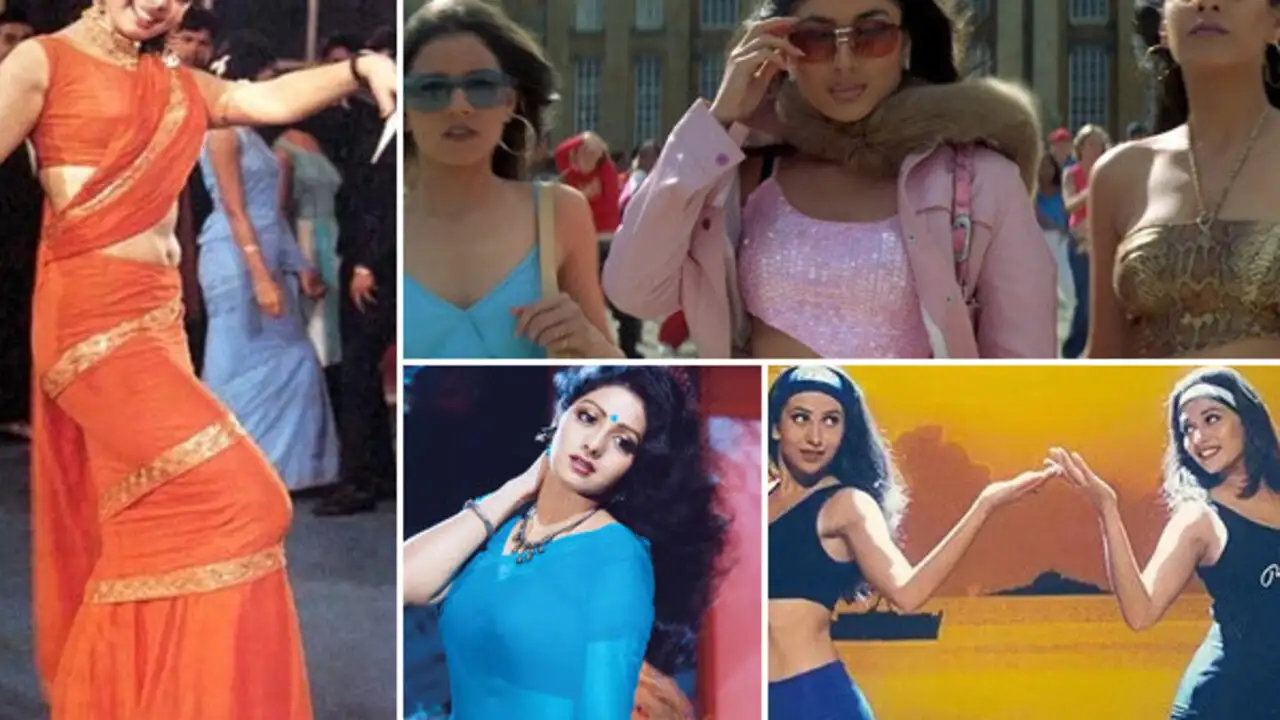STAY CURIOUS
Keep reading to find the excellency out of perfection and skill.
By: Milestone 101 / 2025-01-16
bollywood
Bollywood’s Role in Shaping India’s Style Statements
Bollywood, often referred to as the heart of Indian cinema, is not just a medium of storytelling but a powerhouse of influence.

Over the decades, Bollywood has shaped how Indians perceive fashion, with trends from the silver screen finding their way into closets across the country. From the glamorous costumes of the 1990s to the contemporary, cutting-edge designs of today, Bollywood continues to act as a bridge between high fashion and everyday style. The 1990s were a golden era for Bollywood, with films introducing styles that became cultural phenomena.
This decade marked the beginning of characters dictating what the masses wore. Shah Rukh Khan in Kuch Kuch Hota Hai: Khan’s iconic character Rahul made Gap sweatshirts a sensation in India, marking the brand's mainstream introduction. His sporty jackets, branded T-shirts, and the locket with “Cool” initials became defining elements of youth fashion, influencing college wardrobes nationwide. Kajol in Kuch Kuch Hota Hai: Playing Anjali, Kajol’s fashion journey from tomboyish oversized overalls and baseball caps to graceful sarees encapsulated the versatility of Indian fashion.
Her transformation symbolized the balance between casual chic and traditional elegance. Kareena Kapoor in Kabhi Khushi Kabhie Gham: Kapoor’s portrayal of the ultra-glamorous Poo remains iconic. Her metallic mini skirts, sequined crop tops, and fur-lined jackets redefined millennial fashion. Poo’s catchphrases were as trendy as her outfits, making her a style icon for a generation. Salman Khan in Tere Naam: Khan’s middle-parted hairstyle might have drawn mixed reviews, but it swept through India like a wildfire, proving Bollywood’s unmatched influence on grooming trends.
Behind every Bollywood fashion trend lies a visionary designer. Collaborations between designers and filmmakers brought characters to life, with fashion serving as a storytelling medium. Manish Malhotra: The kingpin of Bollywood fashion, Malhotra transformed onscreen wardrobes with his glamorous designs. He gave Kajol her ethereal green lehenga in Dilwale Dulhania Le Jayenge and created iconic looks for Kabhi Khushi Kabhie Gham, merging global trends with Indian traditions.
Sabyasachi Mukherjee: Renowned for his regal aesthetics, Mukherjee’s work in Devdas and Bajirao Mastani brought Indian heritage to the forefront, especially in bridal and festive fashion. His opulent sarees and Mughal-inspired jewelry remain aspirational.
Anju Modi: Known for period dramas, Modi’s designs in Bajirao Mastani and Padmaavat revived intricate Indian weaves and traditional embroidery, showcasing timeless elegance. The new millennium saw Bollywood characters breaking away from stereotypes, with wardrobes reflecting individuality. Deepika Padukone in Cocktail (2012): As Veronica, Padukone embodied urban chic with asymmetrical dresses, sequined tops, and oversized accessories.
Her bohemian looks captured the imagination of young, urban audiences. Alia Bhatt in Dear Zindagi: Bhatt’s Kaira epitomized comfort with her loose dresses, plaid shirts, and sneakers, presenting a relatable yet stylish wardrobe for working women. Ranveer Singh’s Off-Screen Fashion: Ranveer Singh redefined men’s fashion in India with blingy ensembles, pink pants, and flamboyant suits. His fearless approach to gender-fluid fashion has made experimental dressing mainstream. Contemporary Bollywood reflects current trends while redefining fashion norms.
Sonam Kapoor in Aisha: Kapoor’s character, a high-society fashionista, introduced Indian audiences to luxury brands like Dior and Chanel, bridging the gap between Bollywood and global fashion. Priyanka Chopra in Bajirao Mastani: Chopra’s regal costumes set by Anju Modi featured intricate zardosi work and traditional jewelry, sparking renewed interest in historical Indian attire. Kiara Advani in Shershaah : Advani’s understated pastel ethnic wear resonated with brides seeking minimalistic elegance, setting a new standard for wedding fashion. Bollywood’s influence transcends films. Celebrities use public appearances, social media, and collaborations to drive fashion movements. Redefining Casual: Shah Rukh Khan’s high-neck sweaters and mufflers in romantic classics like Dil To Pagal Hai set trends for the quintessential dreamy hero.
Social Media Trends: Influencers like @thatbohogirl often recreate iconic Bollywood looks, merging reel glamour with real-life accessibility. Eco-Friendly Initiatives: Stars like Alia Bhatt and Dia Mirza advocate for sustainable fashion, inspiring eco-conscious consumerism. From iconic hairstyles to revolutionary designer collaborations, Bollywood remains India’s premier fashion trendsetter. Its ever-evolving styles mirror societal shifts, empowering fans to embrace self-expression. As Bollywood’s global reach grows, its influence on fashion will undoubtedly scale new heights, proving that the reel is as compelling as the ramp.
2022 © Milestone 101. All Rights Reserved.